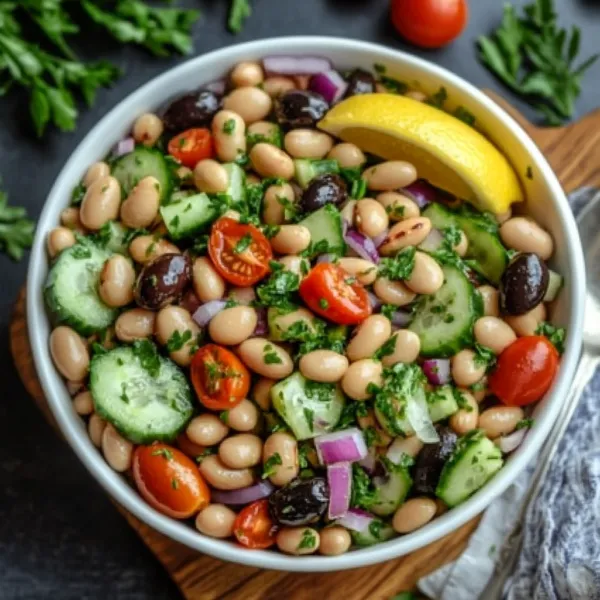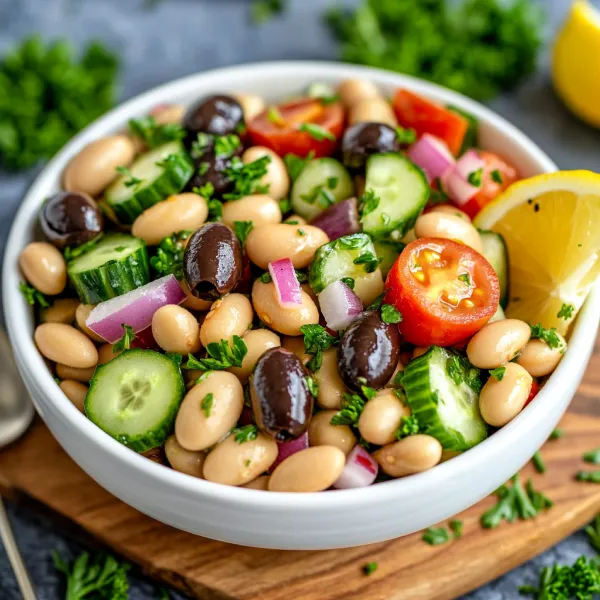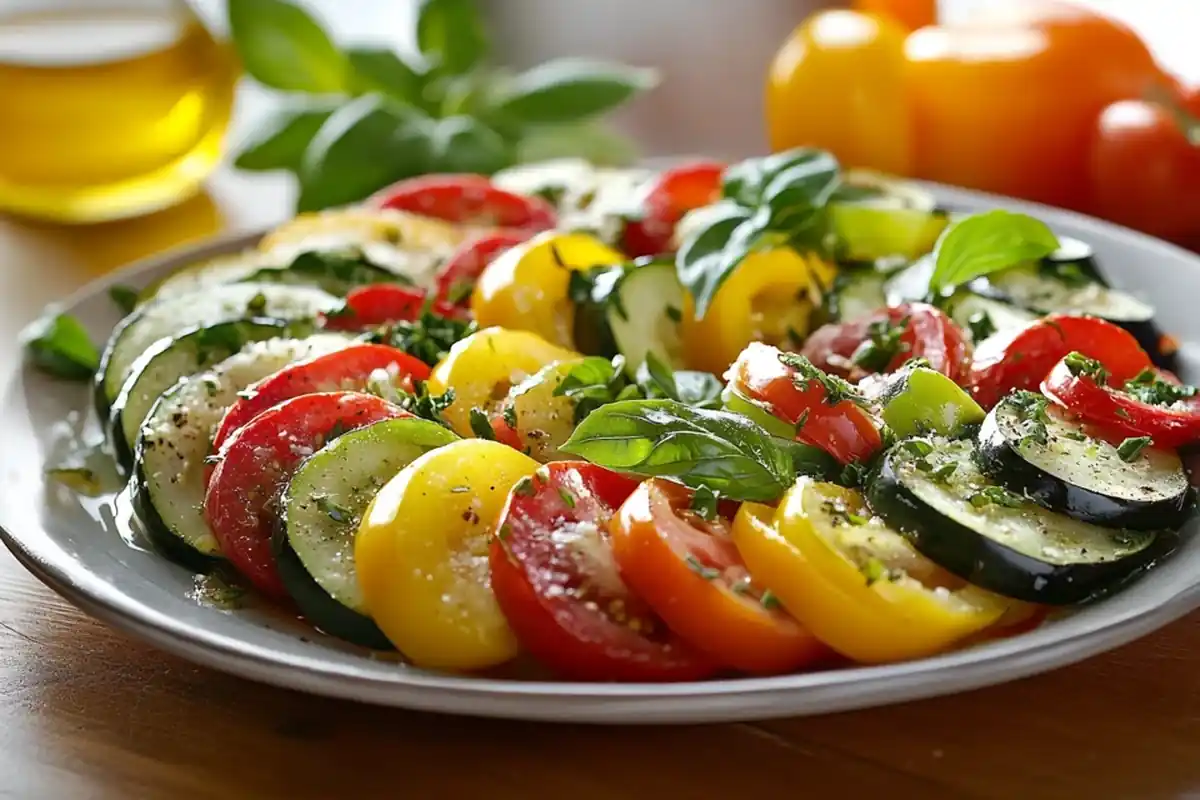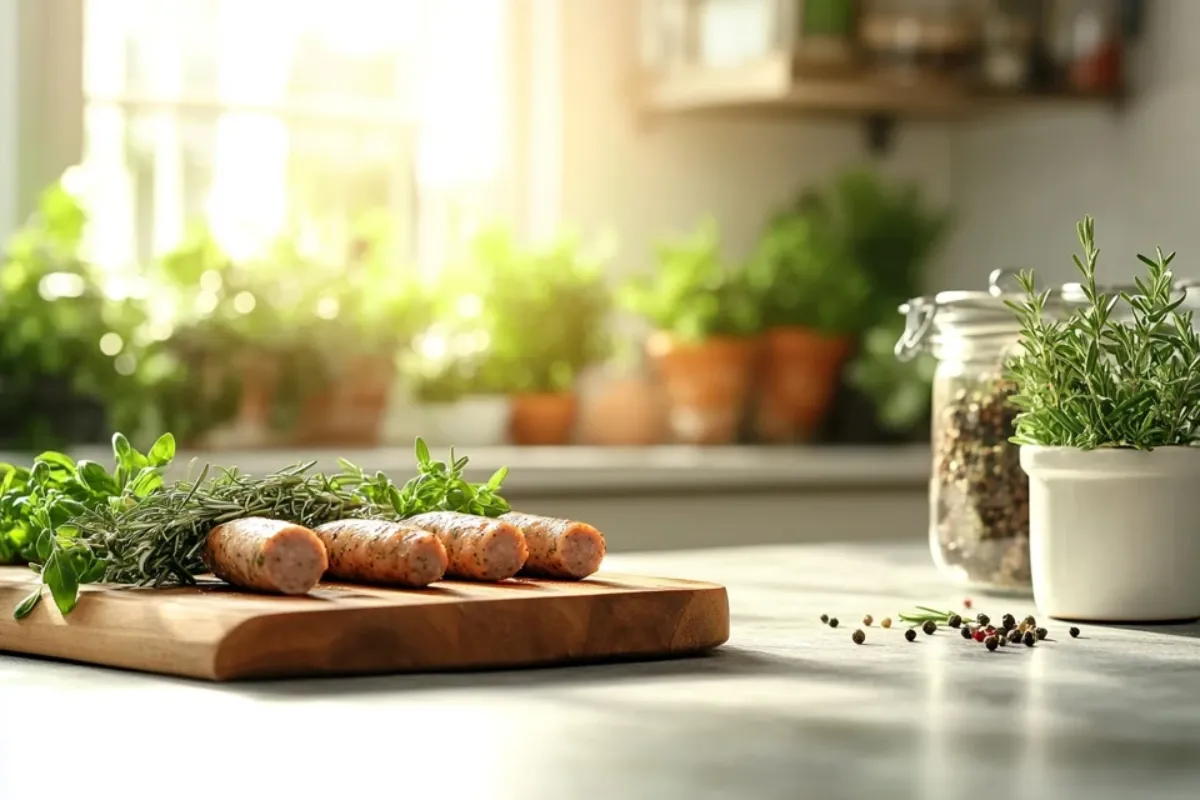Canned cannellini beans are a versatile and nutritious pantry staple, often used in soups, salads, and stews. However, many people wonder: Do you have to cook canned cannellini beans before eating them? In this article, we’ll explore what canned cannellini beans are, why there’s confusion surrounding their preparation, and why they’re a convenient option for quick and healthy meals.
Understanding Canned Cannellini Beans
Canned cannellini beans are pre-cooked and preserved, making them ready to eat straight out of the can. These white kidney beans are:
- Nutritious: Packed with protein, fibre, and essential nutrients like iron and magnesium.
- Versatile: Suitable for a variety of recipes, from hearty casseroles to refreshing summer salads.
- Pre-Cooked: Fully cooked during the canning process, which involves steaming or boiling the beans before sealing them in the can with a brine solution.
Pro Tip: Rinse canned beans before using to reduce excess sodium and improve their flavour.
Why the Confusion?
The uncertainty about whether canned cannellini beans need cooking often stems from the distinction between dried and canned beans.
- Dried Beans: Require soaking and cooking before eating as they are raw and hard.
- Canned Beans: Already cooked and preserved, making them ready to use without further cooking.
The confusion arises because many recipes use the same types of beans but fail to specify whether they are dried or canned.
The Convenience of Canned Beans
Canned beans have become a staple in households worldwide, and for good reason:
- Time-Saving: Unlike dried beans, which require hours of soaking and cooking, canned beans can be used immediately.
- Accessible: Easily available and affordable, they’re perfect for quick meals.
- Long Shelf Life: With proper storage, canned beans can last for years, making them a reliable pantry item.
Pro Tip: Look for low-sodium or no-salt-added options to maximise health benefits.
The Cooking Process of Canned Cannellini Beans
Canned cannellini beans are a versatile and time-saving ingredient, but understanding their preparation process and whether they require additional cooking can help you make the most of them. Here’s a detailed breakdown of how canned beans are processed, their ready-to-eat nature, and why you might choose to cook them further.
Are Canned Cannellini Beans Pre-Cooked?
Yes, canned cannellini beans are pre-cooked during the canning process. This means they are safe to eat straight out of the can without additional cooking. However, some recipes benefit from additional preparation to enhance flavour and texture.
How Canned Beans Are Prepared
The preparation process ensures the beans are safe, soft, and preserved for long-term storage:
- Soaking: The beans are soaked to soften them and reduce cooking time.
- Cooking: They are boiled or steamed until tender.
- Canning: The cooked beans are sealed in cans with water or brine (sometimes with added salt or preservatives) and heat-treated to ensure shelf stability.
This process makes canned beans a convenient option for quick meals, as they’re ready to use without extensive preparation.
What Pre-Cooked Means for You
The pre-cooking process makes canned cannellini beans:
- Ready to Eat: Simply drain and rinse the beans, and they’re ready to add to salads, soups, or pasta.
- Safe: The canning process eliminates bacteria, ensuring the beans are safe to consume directly.
Pro Tip: Rinsing canned beans under cold water removes excess sodium and the brine’s slightly metallic taste.

Why You Might Choose to Cook Them Anyway
Although canned cannellini beans are pre-cooked, cooking them further can improve their taste, texture, and overall dish compatibility.
Improving the Taste
The brine used in canned beans can leave a slight “canned” flavour that cooking helps to eliminate:
- Simmer in Broth: Heat the beans in chicken, vegetable, or beef broth for a deeper, more natural taste.
- Add Aromatics: Use garlic, onion, or bay leaves while warming the beans to infuse flavour.
Customising the Flavour Profile
Cooking canned beans allows you to add personalised touches to suit your recipe:
- Herbs and Spices: Add rosemary, thyme, paprika, or chilli flakes to enhance the dish.
- Olive Oil and Lemon: Toss with a drizzle of olive oil and fresh lemon juice for a Mediterranean twist.
Pro Tip: Sauté beans with aromatics in olive oil for a quick and flavourful side dish.
Adjusting the Texture
While canned beans are generally tender, some recipes require them to be softer or mashed:
- For Soups or Dips: Simmer the beans longer to break them down for a creamier texture.
- For Salads or Side Dishes: Briefly sauté or roast the beans to give them a firmer, slightly crispy texture.
How to Use Canned Cannellini Beans Without Cooking
Canned cannellini beans are a convenient, ready-to-eat ingredient perfect for quick meals. While cooking can enhance their flavour and texture, they can also be used straight from the can in a variety of dishes. Here’s how to prepare them properly and make the most of their versatility.
Using Canned Cannellini Beans Straight from the Can
Rinsing and Draining the Beans
Before using canned cannellini beans in your recipes, rinsing and draining them is essential to remove excess sodium and improve their overall taste.
Why Rinsing is Important
- Removes Excess Sodium: The canning liquid often contains added salt or preservatives, which can make the beans overly salty.
- Improves Flavour: Rinsing eliminates the metallic taste that may come from the canning liquid.
- Enhances Texture: Washing off the brine ensures the beans are clean and ready to absorb the flavours of your recipe.
To rinse: Place the beans in a colander and run cold water over them for 20–30 seconds, gently tossing to ensure thorough cleaning.
When Not to Rinse
In some cases, the canning liquid can be beneficial:
- For Soups or Stews: Retain the liquid to add thickness and richness to the broth.
- For Sauces: The liquid acts as a natural thickener for creamy or bean-based sauces.
Pro Tip: If you’re not rinsing the beans, taste your dish before adding extra salt, as the liquid can be quite salty.
Recipes That Don’t Require Cooking
Canned cannellini beans shine in no-cook recipes, providing quick, nutritious, and satisfying meal options.
Bean Salads
Canned cannellini beans are an excellent base for cold salads:
- Mediterranean Bean Salad: Toss beans with diced cucumbers, cherry tomatoes, red onions, olives, and feta cheese. Drizzle with olive oil, lemon juice, and a sprinkle of oregano.
- Mixed Vegetable Salad: Combine beans with sweetcorn, chopped bell peppers, parsley, and a mustard vinaigrette for a hearty side dish.
Pro Tip: Let the salad sit for 15–20 minutes before serving to allow the flavours to meld.
Cold Dips and Spreads
Cannellini beans can be blended into creamy, protein-rich dips:
- White Bean Hummus: Blend beans with tahini, garlic, lemon juice, olive oil, and a pinch of cumin for a smooth, hummus-style dip.
- Herbed Bean Spread: Puree beans with fresh herbs like parsley or basil, olive oil, and a touch of garlic for a flavourful sandwich spread.
Pro Tip: Add a tablespoon of Greek yoghurt or water to adjust the consistency if needed.

Sandwich or Wrap Fillings
Cannellini beans add protein and creaminess to sandwiches or wraps:
- Bean and Veggie Wrap: Mash beans slightly and layer them with roasted vegetables, spinach, and a drizzle of balsamic glaze in a whole-grain wrap.
- Open-Faced Bean Toast: Spread mashed cannellini beans on toasted sourdough bread and top with avocado slices, chilli flakes, and a drizzle of olive oil.
Pro Tip: Lightly mash the beans for a creamy texture that holds fillings together better.
Cooking Canned Cannellini Beans for Enhanced Dishes
While canned cannellini beans are pre-cooked and ready to eat, cooking or heating them can elevate their flavour and texture. From sautéing to baking, here are some simple methods to transform canned beans into a versatile ingredient for delicious, hearty meals.
How to Cook or Heat Canned Cannellini Beans
Enhancing the natural taste and texture of canned cannellini beans is quick and easy with these cooking methods.
Sautéing in a Pan
Sautéing beans in olive oil with aromatics enhances their flavour and adds a golden finish.
- Heat the Oil: Add 2 tablespoons of olive oil to a skillet over medium heat.
- Cook Aromatics: Sauté minced garlic, diced onions, or shallots until fragrant and softened.
- Add Beans: Stir in the canned cannellini beans (drained and rinsed) and cook for 5–7 minutes, stirring occasionally.
- Season to Taste: Add salt, pepper, and optional herbs like thyme or rosemary.
Pro Tip: Finish with a squeeze of lemon or a drizzle of balsamic vinegar for added brightness.
Simmering in Broth
Simmering beans in broth infuses them with rich flavour and is perfect for soups, stews, or casseroles.
- Prepare the Broth: Use chicken, vegetable, or beef stock as the base.
- Simmer Gently: Add the drained beans to the broth and simmer for 10–15 minutes over low heat.
- Customise: Include vegetables, herbs, or spices to complement the dish you’re preparing.
Pro Tip: Use the simmered beans and broth mixture as a topping for rice or quinoa.
Baking or Roasting
Baking or roasting canned cannellini beans creates a crispy, nutty texture that’s great for snacking or salads.
- Preheat Oven: Set the oven to 200°C (400°F).
- Toss Beans in Oil: Coat the beans with olive oil and season with salt, pepper, paprika, or your favourite spices.
- Spread Evenly: Place the beans on a baking tray in a single layer.
- Roast: Bake for 20–25 minutes, shaking the tray halfway through, until crispy and golden.
Pro Tip: Sprinkle roasted beans over soups or salads for added crunch.
Combining with Other Ingredients
Canned cannellini beans integrate seamlessly into hot dishes, enhancing their flavour and nutrition.
Pasta and Bean Recipes
- Pasta e Fagioli: Combine cannellini beans with pasta, garlic, tomatoes, and Italian herbs for a classic Italian soup.
- Creamy Pasta: Mash a portion of the beans into a creamy garlic sauce for a protein-packed pasta dish.
Adding to Curries or Chillis
- Curries: Stir beans into coconut milk-based curries for added creaminess and protein.
- Chillis: Use them as a hearty substitute for kidney beans in a chilli con carne or vegetarian chilli.

Safety, Storage, and FAQs
Is It Safe to Eat Canned Cannellini Beans Without Cooking?
Yes, canned cannellini beans are safe to eat straight from the can as they are pre-cooked during the canning process. However, rinsing and proper handling ensure the best flavour and quality.
Are There Any Risks?
- Contamination: Always inspect the can for dents, rust, or damage, which can compromise safety.
- High Sodium: Rinse the beans to reduce sodium levels if they’ve been preserved in salty brine.
Do Canned Beans Have Preservatives?
Most canned beans are preserved in water, salt, and sometimes a calcium-based firming agent. Opt for “no-salt-added” or organic varieties to avoid additives.
How to Store Leftover Beans
Refrigeration Tips
- Airtight Container: Transfer leftover beans and their liquid into a sealed container.
- Shelf Life: Refrigerate for up to 3–4 days.
Freezing Options
- Freeze in Portions: Place beans in freezer-safe containers or bags, with a bit of their liquid to prevent drying out.
- Shelf Life: Frozen beans can last up to 3 months. Thaw in the fridge overnight before use.
Frequently Asked Questions
Can I Eat Beans Cold from the Can?
Yes, as long as they’re rinsed or properly drained, canned cannellini beans can be eaten cold in salads or dips.
Are All Canned Beans Pre-Cooked?
Yes, most canned beans, including kidney, black, and pinto beans, are pre-cooked during the canning process, similar to cannellini beans.
How Long Do Canned Beans Last?
- Unopened: Shelf-stable for 1–2 years if stored in a cool, dry place.
- Opened: Store leftovers in the fridge and use within 3–4 days.
Final Thoughts
Do You Need to Cook Canned Cannellini Beans? The Final Answer
Canned cannellini beans are pre-cooked and safe to eat without further cooking, making them a convenient option for quick meals. However, cooking or heating them can enhance their flavour and texture, offering more versatility for different recipes.
Convenience and Versatility
The ready-to-eat nature of canned beans makes them a pantry staple, perfect for quick salads, soups, dips, or as a protein-packed snack.
Encouragement to Experiment
Whether you enjoy them straight from the can or elevate them through cooking, canned cannellini beans are an excellent ingredient for experimenting with flavours, textures, and cuisines. Explore their potential and create dishes that are both delicious and nutritious!

